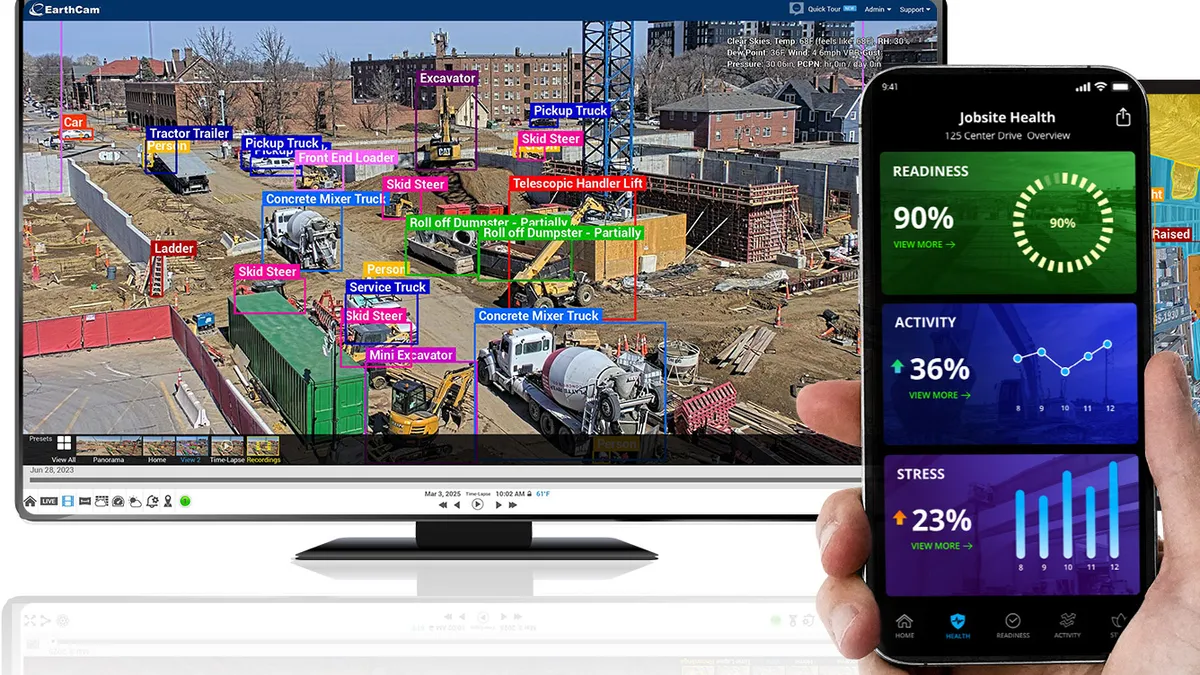When technology comes into play in the construction industry, it’s often associated with the word disruption. But it’s important to define the term to truly understand its effect. In a recent webinar, “Fostering Mad Scientists: How Construction can Create a Culture of Innovation,” JBKnowledge CEO James Benham borrowed Brett Young’s definition: Disruption is a business model change within a particular industry to which specific companies or segments cannot adapt.
The industries themselves continue on, but the dominant companies in that industry change rapidly, leaving others in the dust. Take Kodak, Borders or Blockbuster, for example. Once the giants in photography, bookselling and video rentals, those brands are nearly obsolete because the industries they served evolved faster than they could. “We still have all these things,” said Benham, “but just in different forms.” Cue Apple, Amazon and Netflix.
Some of the individual disruptors — whom Benham referred to as “mad scientists” — who were most significant in modern times include Alexander Graham Bell, Thomas Edison and Nikola Tesla. They were “larger-than-life characters” that disrupted their industries to a “staggering degree," he said.
Mortenson Construction’s senior director of innovation, Ricardo Khan, explained that change in individuals' behavior precedes real organizational change, noting that, this transition "doesn’t happen overnight or even in a year or two. It happens over a journey.” And innovation most often happens on the jobsite, he added. “Jobsites are petri dishes for innovation because we have problems to solve.”
Minneapolis-based construction management firm Kraus-Anderson operates by the belief that senior leadership sets the tone for innovation. It’s their responsibility to generate enthusiasm, set the tone, have bold innovation principles, invest in key hires, continue to evolve and to build a culture of loyal and smart innovators, said Mike Benz, the firm’s vice president of information technology.
Be the disruptor, not the disruptee
Ensuring your company is a disruptor rather than the disrupted takes intentional action. Benham and Khan each shared some of the ways they foster innovation in their respective companies.
Set audacious goals.
Easily attainable goals don’t motive people. Katerra, for example, is “doing something in building that is absolutely audacious,” said Benham. The company is growing organically and inorganically and integrating horizontally and vertically by snapping up companies all over the world in an effort to become a big, integrated, one-stop shop.
Dedicate staff and budgets.
Part-time people don’t produce dedicated results and “innovation doesn’t happen in people’s spare time,” said Benham. Create focused roles that exist to innovate. “[Innovating] isn’t like building a building,” he said. “You start innovating and you keep on going. This is a living, breathing organism.”
Establish a process.
For innovation to truly thrive, companies must have not only a process in place for running the business, but also a specific process for innovation. “Keeping your head above water isn’t a process for running a business,” said Benham. JBKnowledge, for example, implemented a system in which no technology is allowed during meetings because it’s too distracting. The process is to sit down at a table and talk through problems and solutions face to face with no screens in the way. The resulting open and honest conversations and healthy conflict has driven innovation forward, he said.
Study the problem.
Benham quoted the oft-cited advice of, if you have an hour, spend 55 minutes studying the problem and five minutes on the solution. “Don’t build solutions in search of a problem,” he said. Seek out the pain points, then build a solution around those.
Focus on adoption.
Look at the people who are going to use the technology you invest in to solve the problems you identified. “Get your eyes off the desk and on the field,” Benham said, so that you can understand how these people work and how they can make the best use of the tool.
Engage.
Establish a collaborative framework of building upon individuals’ ideas and recognizing team members. Khan said that, to Mortenson, innovation means coming up with new ways of working. Before the company tackles a challenge, the senior leadership team already is committed to solving it.
Crowdsource ideas from the entire team, Khan said, because if all team members aren’t involved, innovation will fail. “It must be an encompassed process where all are involved,” he said. Mortenson runs an internal innovation summit every other year where hundreds of team members and senior leadership convene to run through design thinking and develop new ways of approaching problems.
Partner.
“It’s about connecting ideas to capabilities and tackling big problems together,” Khan said. In 2013, for example, Mortenson partnered with Stanford University’s Center for Integrated Facility Engineering and utilized Stanford’s MDO (multi-disciplinary optimization) method to run research and analysis within a given set of parameters around wind energy.
Whereas a conventional process would have taken weeks to work through, the MDO Methodology enabled them to complete the same amount of work in days. Today, Mortenson’s wind division is a major component of the company, which has worked on such major projects as the $1 billion XCel Energy wind farm in Colorado.
Benham also noted that calculating and demonstrating return on investment is a critical step to win buy-in, in addition to cautioning companies to understand the difference between a toy and a tool. “A toy is for entertainment; a tool is for return,” he said.
Incremental innovation
Several years ago, Kraus-Anderson was printing new project plan sets nearly every week for each trade on the job. Benz remembers they were expensive, heavy and immediately obsolete. Investing in iPads and a new app that would automatically distribute revised plan sheets each time one changed made for less rework, better communication and less printing and waste.
“Innovation can be incremental,” said Benz. “It doesn’t need to be revolutionary.” He also pointed out that innovation doesn’t necessarily mean technology. It also can address new processes, new markets, hiring new talent and new leadership styles. “We focus on process improvement,” he said. “Not just cool new technology.





















